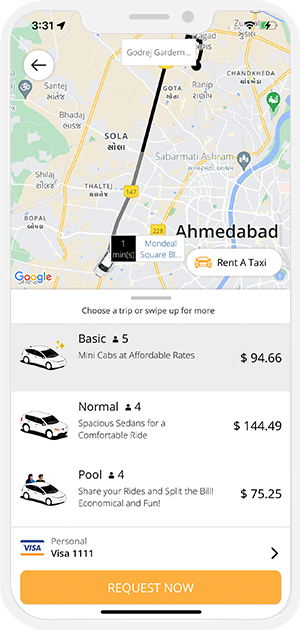The rise of Uber-inspired apps has greatly propelled the taxi booking sector, resulting in a substantial increase in the demand for Uber clone script business models. This swift expansion has drawn in a multitude of aspiring entrepreneurs, enticing them to explore the opportunities within this thriving industry.
Every day, the worldwide market witnesses the introduction of new applications similar to Uber. To emulate their achievements, it is imperative to conduct comprehensive research, engage in strategic planning, and execute effectively. This entails developing an Uber clone script that incorporates a range of user-friendly functionalities designed to streamline the process of booking taxis. Among these features, the dispatcher panel shines as a notable illustration.
This specific panel represents a small yet vital element within the admin dashboard. Within this panel, the administrator has the ability to assign drivers to either respond to user requests or manually input ride details for users. When the administrator clicks the “add” button, they must complete all the necessary user information in the provided form. By making use of the auto-assign provider feature, providers can be automatically matched with users, resulting in the driver being dispatched to the user’s location. This guarantees that the nearest available driver is assigned to the user.

Exceptional Attributes & Features of the Uber Clone Script!
Table of Contents
The manual dispatch feature plays a vital role in the application. While owning a smartphone is generally a prerequisite for using a taxi app, given its app-based nature, it’s essential to acknowledge that not everyone has access to a smartphone. Does this mean that individuals without smartphones cannot utilize the app to request rides?
No, they can still access the service. With the Manual dispatch feature, users without smartphones can contact the admin, who can then arrange a ride manually. Using the admin panel, the ride can be scheduled by inputting the pickup and drop-off locations communicated by the user over the phone.
With this feature, dispatchers can now:
- take phone bookings,
- schedule trips,
- allocate the closest trips to the drivers,
- track payments
- Track taxi fares receipts through email once the trip is completed.
As previously stated, this panel can accept booking requests via phone calls when the “add” button is clicked.
After a comprehensive review of the panel, you’ll have access to trip data, allowing you to track the real-time locations of both the service provider and the user. Furthermore, you can explore additional information like trip histories, passenger and user profiles, transaction records, payment methods used, taxi details, and a wealth of other data.
Interested in learning about more features provided here? Keep reading below!
- Through the provided custom filters, the administrator can extract comprehensive data from the “ALL” tabs. This includes details on ride requests, the locations of the provider and the user, and all other relevant trip-related information.
- Admin can view and assign requests scheduled for the future to the nearest available driver.
- If the admin encounters a delay in assigning a request to a driver, it escalates to a warning stage, requiring prompt action from the admin to resolve the matter.
- Manage booking requests and allocate them to the nearest available driver.
- Set up and consistently update company and dispatcher information, including driver and vehicle specifics.
Other Clone Features
- Monitor all the automated reports that generated for all the rides that conducted in the past and present.
- Managing all the transactions efficiently from one single window.
- Review statistics, blacklists, temporarily blocked data of clients and drivers.
- The Auto-assign provider is a versatile feature that offers flexibility. Admins can enable or disable it as needed. When activated, this feature eliminates the need for manual driver assignments. Instead, the Uber clone script automatically matches drivers with users based on their locations, efficiently selecting the quickest driver to reach the user.
- When the auto-assign feature is turned off, the admin must handle all tasks manually. This includes assigning drivers to users, reviewing warnings, accessing user and driver information, and various other responsibilities. As a result, the driver will receive the request from the admin and proceed with their selection.

In summary, this provides a concise overview of utilizing the recently introduced dispatcher panel in the Uber clone script. This application includes all the crucial components necessary for efficiently operating a successful business, managing providers, users, and rides effectively.
Indeed, consolidating such a wide array of features into one app is a significant endeavor. If you’re considering upgrading your applications, now is the ideal time to do so. Embrace these improvements and propel your business with added confidence and enhanced security.
Caution!
When considering obtaining a taxi app, it’s crucial not to be enticed by lower-priced products in the market. Your app should strive for excellence. In a crowded app landscape, setting yours apart from the competition necessitates it being the top and premier choice.
Look for distinctive features and other aspects that render your system innovative and captivating from the user’s point of view.
An app armed with industry-leading features is set for success. With more users adopting the app, your fleet will expand, solidifying your position as the top provider of an Uber Clone script in your region.
